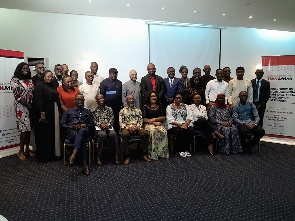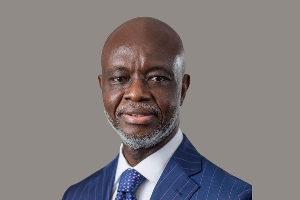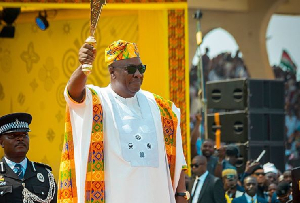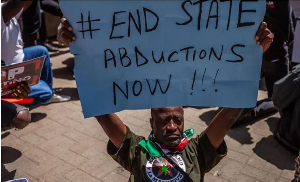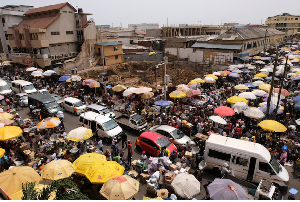The African Continental Free Trade Area (AfCFTA) is offering the biggest sign of hope for Africa to bring significant economic and social gains for the African people.
Although its implementation has been slow, AfCFTA if fully implemented could lead to higher incomes, lower poverty, and faster economic growth.
Additionally, if it is fully implemented to harmonize investment and competition rules, the trade pact could boost regional incomes by as much as 9 percent—to $571 billion, according to a new World Bank report.
It could also create almost 18 million more jobs, many of them higher-paying and better-quality jobs, with women workers seeing the biggest gains. By 2035, the resulting jobs and income growth could help up to 50 million people exit extreme poverty.
The implementation of the trade agreement would further lead to larger wage gains for women and skilled workers.
Wages of female workers are expected to be 11.2 per cent higher in 2035 as compared to the wage level without the agreement, outpacing 9.8 per cent growth of male workers’ wages, according to experts.
As part of AfCFTA’s first phase, which took effect in January 2021, it would gradually eliminate tariffs on 90 per cent of goods and reduce barriers to trade in services, the Director of Trade in Goods and Competition at the AfCFTA Secretariat, Mohamed Ali told participants at a three-day ECOWAS regional multi-stakeholder forum on AfCFTA.
The forum was organised by Third World Network-Africa (TWN-Africa) for Anglophone West Africa.
The Managing Director for Development Policy and Partnerships, World Bank, Mari Pangestu noted: “The AfCFTA comes at a critical time when regional cooperation is needed to navigate compounded risks and enhance the resilience of supply chains, to support green, resilient and inclusive growth in Africa”.
The participants at the forum held in Accra from 20-22nd November 2023 urged African countries to work together to make the AfCFTA a reality and reap its many benefits.
These benefits include reducing barriers to trade and investment, enhancing competition, and ensuring markets function fairly and efficiently through clear and predictable rules.
The participants which comprised private sector associations, civil society organisations, and officials of the AfCFTA Secretariat, among others, discussed ways to assess the benefits for a market of more than 1.3 billion people with a combined GDP of $3.6 trillion.
Economists are of the view that a significant integration beyond trade and trade facilitation measures, that harmonises policies on investment, competition, e-commerce, and intellectual property rights could boost market efficiency and competitiveness, reduce regulatory risks, and attract even more foreign direct investment.
By 2035, this integration would increase incomes by 9 per cent, or $571 billion, and create 18 million new jobs, with 2.5 per cent of the continent’s workers moving to new industries.
This would expand the number of people living in extreme poverty to 50 million, the World Bank report noted.
It found that greater FDI could raise Africa’s exports to 32 per cent by 2035, with intra-African exports growing by 109 per cent, especially in the manufactured goods sectors.
All countries in Africa will see their intra-African exports increase, including Tunisia (165%), Cameroon (144%), Ghana (132%), Tanzania (126%), and South Africa (61%).
As barriers to trade and investment are reduced, export sectors likely to grow the most are textiles and apparel; chemical, rubber and plastic products; and processed foods.
Deeper integration would lower trade costs and boost capital inflows boosting exports from services sectors such as transport, communications, and hospitality.
The Secretary-General of the AfCFTA Secretariat, Wamkele Mene, said: “Today, Africa is one of the least integrated regions globally. African countries trade more with the outside world than with each other.
The pact can help countries to simplify and harmonise trade and transit procedures, improve infrastructure, transport and logistics and spur the flows of goods, services, capital, and people that are so vital for development”.
To unlock these potential gains in trade, investment, and jobs, countries must first successfully conclude the negotiations and the treaty’s most ambitious goals must be carried out by each country.
To this end, Mr Ali explained that 46 State Parties had deposited their instruments of ratification of the AfCFTA Agreement with the most recent being Comoros.
“42 schedules are by the Agreed Modalities and form part of the Ministerial Directive on the Application of Provisional Schedules on Tariff Concessions –trade reciprocally under the AfCFTA preferences”.
He was quick to add that the agreed rules of Origin for the AfCFTA stood at 92.3%, whereas some chapters under the textiles and automotive sectors remain outstanding.
Trade in Serves
Touching on the five priority service sectors comprising business, communication, financial; transport, and tourism and travel-related services, he said: “48 Trade in service schedule commitments have been deposited with the Secretariat” in Accra.
Protocol Trade in Services
Abdoulie Jammeh of the Gambian Ministry of Trade explained that the AfCFTA Protocol on Trade on Services seeks to create a Single continental Services Market through the progressive liberalisation of services on the continent.
The protocol he noted provides the foundation to negotiate, as part of its annexes – Schedules of Specific Commitments and Regulatory Cooperation framework for services sectors.
Digital Trade
Dr Talkmore Chidede, Digital Trade Expert at the AfCFTA Secretariat in Accra, Ghana cautioned African governments, businesses, and individuals not to overlook the power of the Internet in driving Africa’s digital economy.
According to him, businesses-small, medium, and large could facilitate trade across thousands of kilometres in Africa and beyond if there was availability of the Internet.
Giving an overview of Digital Trade in the AfCFTA, Dr Chidede underscored the importance of the Internet in oiling the continent’s economy.
Digital trade inclusion
The main objective is to bridge the digital divide between advanced and less advanced countries, big and small businesses, rural and urban communities, and different groups.
Digital Inclusion – tackling barriers to the participation of women, youth, persons with disabilities and rural communities, among other underserved groups, in the digital trade and digital economy.
The Programs Officer for TWN-Africa, Sylvester Bagooro, observed: “The digital economy is evolving at breakneck speed, driven by the ability to collect, use and analyse massive amounts of machine-readable information (digital data).
These digital data arise from the digital footprints of personal, social, and business activities taking place on various digital platforms, he added.
However, there are huge divides. Two countries the United States and China. For most least developed countries (LDCs), they lag, Mr Bagooro indicated.
Challenges
The Pan-African Private Sector Trade and Investment Committee (PAFTRAC) Africa CEO Trade annual survey has demonstrated that there is currently insufficient awareness of the AfCFTA and its various instruments, even among African CEOs, so there is work to do in terms of promotion.
Its Trade Survey 2023 lamented is the continued dominance of cash in advance to finance cross-border trade reflects the need for more secure payment methods for cross-border trade.
The new Pan-African Payment and Settlement System (PAPSS) offers the perfect solution, particularly as payments can be made in African currencies.
However, the banking industry seems well aware of the new payment platform, and many companies in other sectors are not familiar with it.
Given that it makes cross-border trade easier, reduces costs and lessens demand for US dollars, it seems likely that the PAPSS will come to be seen as one of the most important contributors to boosting internal levels of African trade.
Trade volumes in most parts of Africa are currently very low but even one of the continent’s main trading centres, North Africa, is relatively unconnected with countries south of the Sahara.
Recent road improvements across the Sahara will help but transport links across the very heart of the continent, in Central Africa, remained limited, so that region looks like remaining on the sidelines in terms of intra-African trade for the foreseeable future.
In the long term, it needs to be brought into the fold. Ultimately, it is a change in perception that may be most important in boosting internal African trade volumes.
African companies need to consider trade with neighbouring states as one of their best options and it is the AfCFTA that is likely to be the best tool in changing that perception.
Furthermore, the Protocol on Free Movement of Persons is still a major headache despite some years into the implementation of the African Continental Free Trade Agreement.
AfCFTA which is a free trade area encompassing most African countries is yet to address the decades-old problem of the free movement of persons within the African continent.
The AfCFTA agreement which was adopted and opened for signature on 21 March 2018 in Kigali, Rwanda and entered into force on 30 May 2019 to establish a unified market, is poised to become the world’s largest free trade area with 55 member states.
Recognising the importance of human resource skills to the continent’s development, the African Union adopted the Free Movement of Persons protocol in 2018, which has been signed by 47 Member States.
However, only four countries namely Rwanda, Niger, Mali and Sao Tome and Principe have ratified the Protocol to date.
So, the state of ratification is slow and disappointing as the protocol is aimed at facilitating regional integration in general, and the implementation of the AfCFTA, in particular.
Officials of the AfCFTA Secretariat admitted that it would take a long time for the free movement of persons to be achieved.
The AfCFTA is one of the innovative ways of transforming Africa’s economies and creating the biggest single market in the world, however, the delays in the implementation of the free movement of person protocol are affecting the smooth operations of AfCFTA.
If the problems of the free movement of persons are not addressed, they would affect the implementation of the Agreement.
Trades will not occur if people do not move. So African governments must work assiduously to cut down the barriers impeding the movement of persons on the continent.
The fragmentation of Africa into 50-odd different markets, many of them very small in economic terms, is widely recognised as being one of the main causes of constrained trade volumes across the continent.
Although informal trade is partly to blame, intracontinental trade volumes were put at just 17% of total African trade in 2020, in comparison with 58% for Asia, for example.
Much of the blame must be laid at the foot of the colonial era partition and development of African economies, with trade and transport infrastructure shaped to ship raw materials out of African colonies and onto European markets, the survey report said.
As a result, roads and railways at independence often failed to connect neighbouring states, while the new governments introduced high trade duties to protect their nascent industries.
These fragmented economic and trade patterns stymied the development of cross-border supply chains and left the continent largely dependent on exporting raw commodities and importing processed and manufactured goods.
However, African governments sought to build on the piecemeal progress made in eroding those barriers by launching the AfCFTA at the start of 2021.
At present, the combined GDP of the new zone is just $3.6 trillion, about the same as that of Germany, but its potential is enormous.
What can be done?
Creating a free trade zone according to experts should encourage much greater levels of intra-African trade but the fact that it is an African solution to African problems is important, as it could be adapted to local needs by those involved.
Yet the scale of hard work involved in making it a success should not be underestimated.
The Executive Director of TWN-Africa, Dr Yao Graham called on African governments to take advantage of AfCFTA by making decisions on opening up their economies to boost trade levels on the continent.
The free trade area also requires greater private sector participation and buy-in to make it responsive to the needs and constraints of African businesses, members of PAFTRAC demanded.
Bottom line
It must be recognised that the implementation of the AfCFTA is a process, not a single event. Its launch was the beginning, not the end, of making it a reality.
Business News of Monday, 11 December 2023
Source: Masahudu Ankiilu Kunateh, Contributor





